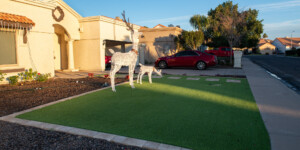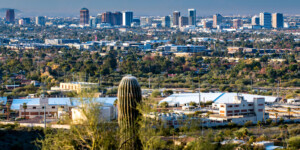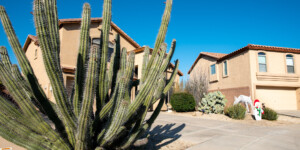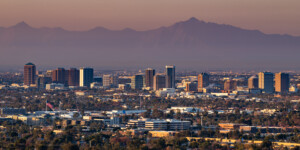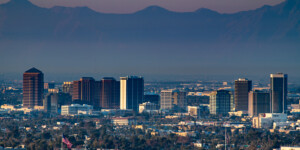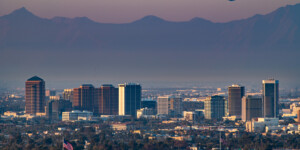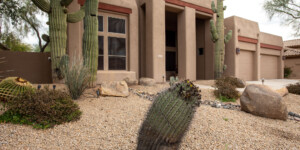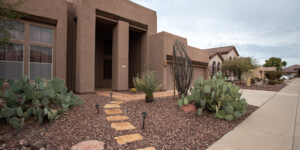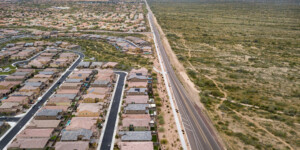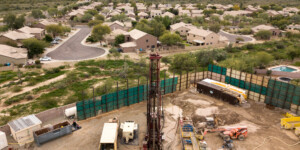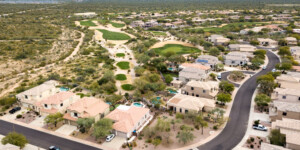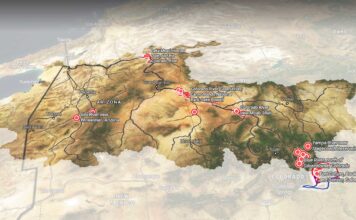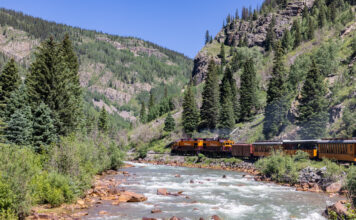This page features photos of xeriscaping in Phoenix, Arizona.
Xeriscaping is the practice of designing landscapes to reduce or eliminate the need for irrigation. Homeowners can opt for yards filled with rocks, mulch, soil and drought-tolerant native plants, rather than grass and other water-intensive plants, to create a more desert-like landscape.
Xeriscaping’s popularity has grown across arid parts of the Western United States as homeowners, businesses and governments seek to reduce water consumption—and save money. “The largest use of potable water in Arizona is for landscaping and as much as 70 percent of residential water use is outdoors,” according to the Arizona Department of Water Resources.
In Phoenix, a study of 800 single family homes showed that 80 percent had some degree of desert landscaping, according to a 2015 KJZZ story. “In 2019, the average Phoenix resident used about 29 percent less water than the average resident in 1990,” according to the city of Phoenix.
Arizonans can use a variety of desert landscaping, such as the palo verde tree, saguaro cactus and century plant to cut water use.
Learn more:
“Conservation: Landscaping.” Arizona Department of Water Resources.
“Xeriscaping.” National Geographic Resource Library.
| Date | Varies |
| Location | Phoenix, Arizona (map) |
| Credit | Ted Wood/The Water Desk |
| Rights | Free to reuse under Creative Commons license. |
Selected images from the gallery
Click to enlarge
To use these images
Please read and consent to the terms and license below for access to the download page.
To help us continue to offer this free material, we ask that you please:
- Credit the original photographer and the Water Desk as the source
- Email us a link to the published story at waterdesk@colorado.edu
- Consider sending The Water Desk your ideas for future content that we could add to the library
- Keep supporting professional photojournalists by hiring them for assignments



